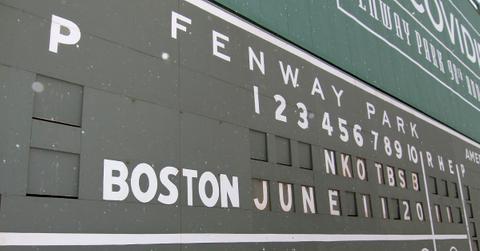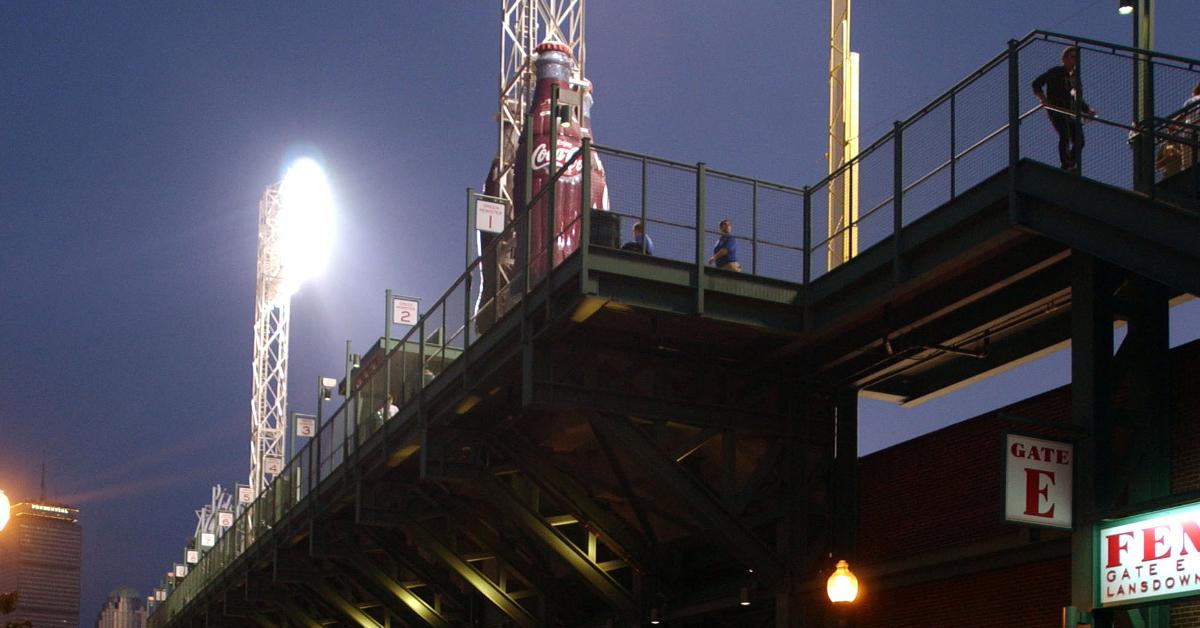The Practical History Behind Fenway’s Beloved Green Monster
Published Oct. 6 2021, 3:12 p.m. ET

Baseball might be considered one of the most boring professional sports out there (at least it's not cricket), but it's hard to deny that it holds a huge place in America's history. Even the sport's biggest haters have to admit that there's something special about attending a game, and that's because there are some truly magnificent stadiums located all over America.
Each one has a charm all its own, but it's hard to deny that one of the most lauded fixtures in MLB history is the Green Monster in Fenway Park in Boston, where the Red Sox play. But why does it have the giant wall?

Why does Fenway Park have the Green Monster?
To understand the history of the Green Monster is to understand a bit of Boston's baseball history itself. The Red Sox first started as a team in 1901. The first nine years of the ball club's life saw the team play at Huntington Avenue, which wasn't that great of a field.
There was a shed just chilling right in deep center field that looked like it didn't belong there and patchy grass tufts that made for a real ratchet operation. That's when the team's owner at the time, a local business owner by the name of John Taylor, decided to move their home field in 1910 to the corner of Landsowne and Ipswich streets in Fenway.
He probably got the land at a bargain price because back then, it was undeveloped swampland. While that swamp-people spirit carries on in the hearts of every Bostonian, the neighborhood has changed considerably since then.
And there's a strong argument to be made that Taylor's plans for constructing Fenway Park, a huge concrete and steel structure, is what helped spur development in Fenway.
So Taylor was able to secure himself a ton of land, and he already had money to spare. What prompted him to build the Green Monster? It seems like an odd stylistic choice for the new stadium. But it was really all about drumming up business.
You see, Taylor didn't want a bunch of freeloaders to get a sneak peek of the games from behind the left-field wall.

So he had a 25-foot-high wall built to ensure that folks weren't going to crowd into high-rise buildings to watch the game without paying for a ticket.
But that wasn't when the Green Monster that we see today was built. It was until the destructive Fenway fire of 1933 that the new and improved Green Monster was built.
When the new wall debuted in '34, however, the whole thing wasn't painted green. In fact, it was covered in advertisements. But once those faded away, Red Sox management just decided to paint it the same color green as the rest of the park.
Fenway's Green Monster has undergone some upgrades over the years.
In 1936, a giant net was installed to stop some of the league's more proficient sluggers from launching baseballs into the heads of pedestrians and the windows of local businesses just outside of the park.
A ladder was installed on the Monster too that park employees would climb in order to retrieve balls that were hit up into the area. And while the nets were removed in 2003 to install 269 seats for a unique view of the field, the ladder remains.
The Green Monster, although initially installed to keep people from watching games for free, is now one of the most beloved fixtures in all of sports.